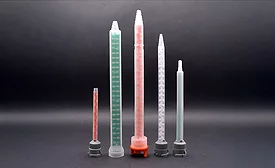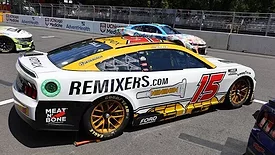Home » Keywords: » static mixers
Items Tagged with 'static mixers'
ARTICLES
Fluid Flow Simulations to Reduce Development Cycle Times
The use of flow simulations can accelerate development cycles and lead to a reduction in costs.
October 15, 2024
Parameters to Quantify Mixing Efficiency of Static Mixers
The third in a series on static mixing, this article explains mixer-specific characteristics, outlining parameters used to assess mixer efficiency and the advantages and disadvantages of mixer types.
December 15, 2023
Sustainable Product Development for Two-Component Dispensing Systems
Implementing the principles of eco-design helps companies reach sustainability goals, reducing their overall ecological footprint.
November 15, 2023
Influence of Rheology on Mixing Behavior in Static Mixers
The second of a series on static mixing, this article focuses on how the rheology of a material impacts mixing behavior.
October 20, 2023
Introduction to Static Mixing in Laminar Flows
The first of a three-part series on static mixing, this article focuses on the different mixing principles in laminar mixing and the typical mixer geometries derived from them.
September 13, 2023
The Next Generation of Static Mixing Nozzles
How 3D printing, paired with new science, is leading manufacturers to find new, ultra-efficient nozzles that are disrupting a 50-year industry.
December 15, 2022
Keep the info flowing with our newsletters!
Get the latest industry updates tailored your way.
JOIN TODAY!Copyright ©2025. All Rights Reserved BNP Media.
Design, CMS, Hosting & Web Development :: ePublishing
.webp?height=168&t=1704834340&width=275)








.webp?height=168&t=1672175877&width=275)